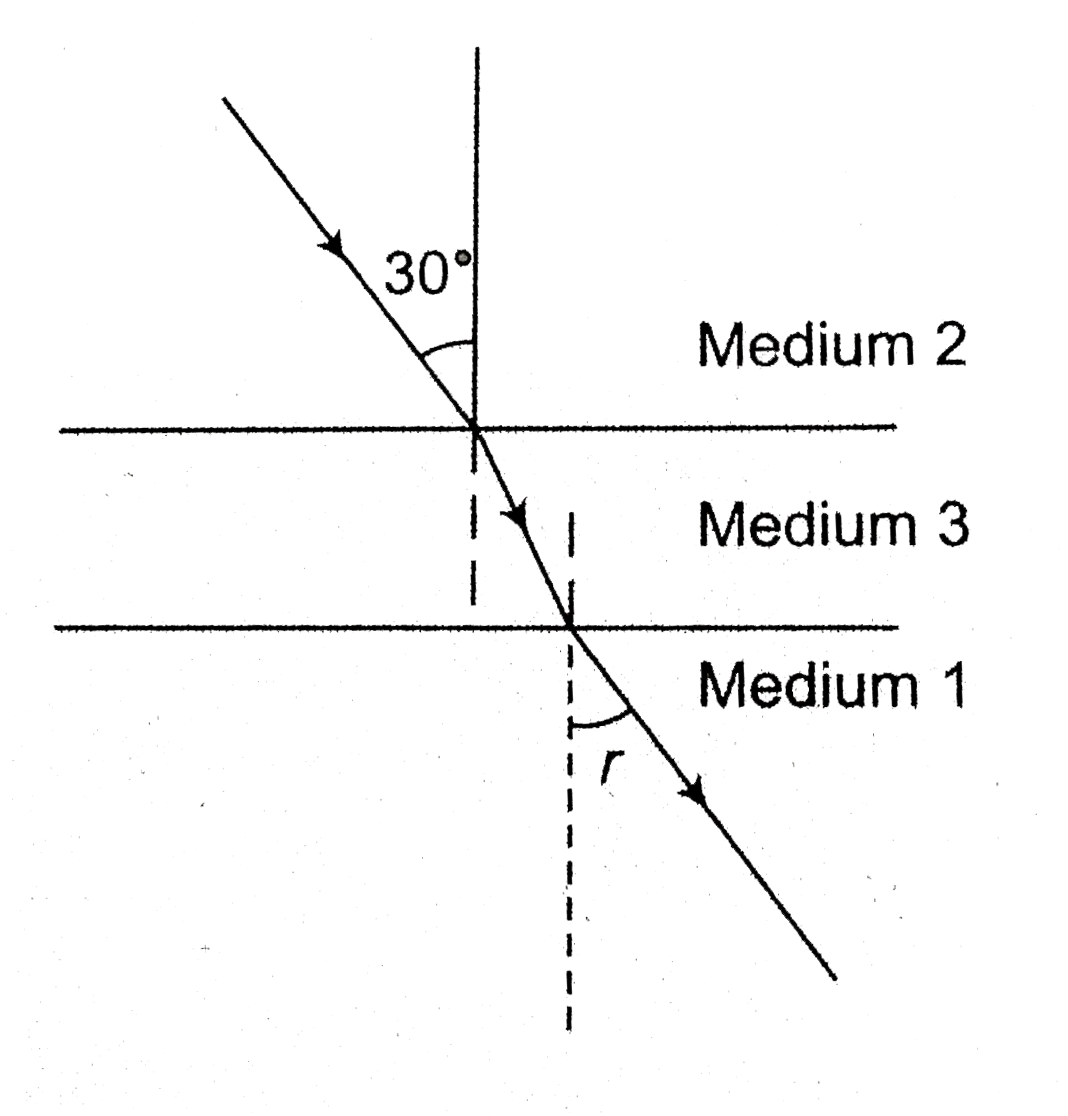When light travels through a medium from vacuum, its speed
increases
decreases
remains same
increases or decreases depending on medium
To solve the question about the speed of light when it travels through a medium from vacuum, we can follow these steps:
1. Understand the Concept of Refractive Index:
- The refractive index (n) of a medium is defined as the ratio of the speed of light in vacuum (C) to the speed of light in that medium (V).
- Mathematically, this is expressed as:
n=CV
2. Rearranging the Formula:
- To find the speed of light in the medium (V), we can rearrange the formula:
V=Cn
3. Properties of Refractive Index:
- The refractive index (n) of any medium is always greater than or equal to 1 (n ≥ 1). This means that light travels slower in any medium compared to its speed in vacuum.
4. Analyzing the Speed of Light in the Medium:
- Since n is always greater than or equal to 1, we can conclude that:
V≤C
- This indicates that the speed of light in a medium (V) is less than or equal to the speed of light in vacuum (C).
5. Conclusion:
- Therefore, when light travels through a medium from vacuum, its speed decreases.
Final Answer:
The speed of light in a medium is less than the speed of light in vacuum.
---
- The refractive index (n) of a medium is defined as the ratio of the speed of light in vacuum (C) to the speed of light in that medium (V).
- Mathematically, this is expressed as:
n=CV
- To find the speed of light in the medium (V), we can rearrange the formula:
V=Cn
- The refractive index (n) of any medium is always greater than or equal to 1 (n ≥ 1). This means that light travels slower in any medium compared to its speed in vacuum.
- Since n is always greater than or equal to 1, we can conclude that:
V≤C
- This indicates that the speed of light in a medium (V) is less than or equal to the speed of light in vacuum (C).
- Therefore, when light travels through a medium from vacuum, its speed decreases.
The speed of light in a medium is less than the speed of light in vacuum.
Topper's Solved these Questions
- NATURE OF LIGHT AND PHOTOELECTRIC EFFECTBOOK - CENGAGE PHYSICSCHAPTER - NATURE OF LIGHT AND PHOTOELECTRIC EFFECTEXERCISE - Mandatory Exercise (Exercise Set IV)
3 Videos
- NATURE OF LIGHT AND PHOTOELECTRIC EFFECTBOOK - CENGAGE PHYSICSCHAPTER - NATURE OF LIGHT AND PHOTOELECTRIC EFFECTEXERCISE - Challenging Exercise
3 Videos
- NATURE OF LIGHT AND PHOTOELECTRIC EFFECTBOOK - CENGAGE PHYSICSCHAPTER - NATURE OF LIGHT AND PHOTOELECTRIC EFFECTEXERCISE - Mandatory Exercise (Exercise Set II)
4 Videos
- MAGNETISMBOOK - CENGAGE PHYSICSCHAPTER - MAGNETISMEXERCISE - OLYMPIAD AND NTSE LEVEL EXERCISES
8 Videos
- OPTICAL INSTRUMENTS BOOK - CENGAGE PHYSICSCHAPTER - OPTICAL INSTRUMENTS EXERCISE - OLYMPLAD AND NTSE LEVEL EXERCISES
10 Videos
Similar Questions
When a light enters from medium 1 to 2, its speed increases by 20% and when medium 1 to medium 3, its speed decreases by 20%. Consider the situation in the following figure. Find r.

View SolutionWhen light travels from a rares to a denser medium, the speed of light decreases. Does the reduction in speed imply a reduction in the energy ?
View Solution
Knowledge Check
When light is refracted into a medium from vacuum
Aits wavelength and frequency both increasesBits wavelength increases but frequency remains unchangedCits wavelength decreases but frequency remains unchangedDits wavelength and frequency both decreasesHeat travels through vaccum by
AConductionBConvectionCRadiationDBoth (A) and (B)A: When a narrow pulse of light is sent through a medium, it doesn't retain its shape as it travels through the medium.
R: Since the speed of propagation in a medium depends on wavelength , different wavelength components of the pulse travel with different speeds.AIF both Assertion & Reason are true and the reason is the correct explanation of the assertion, then mark (1).BIf both Assertion & Reason are true but the reason is not the correct explanation of the assertion, then mark(2)CIF Assertion is true statement but Reason is false then mark(3)DIf both Assertion and Reason are false statements, then mark (4)
The wavelength of light from a given sources is 6000 Å . The wavelength of this light when it travels through a medium of refractive index 1.5 is
View SolutionWhen light travels from a rarer medium to a denser medium, it ________
View SolutionWhen light travels from a denser medium to a rarer medium, what is the effect on its speed?
A) Increases
B) No change
C) Decreases
D) Decreases and then increases
View SolutionAssertion :– As light travels from one medium to another, the speed of light change.
Reason :– Speed is the characteristic of medium so it will change.
View SolutionThe speed of light in air is 3×108m/s, when this light travels in a medium of refractive index 1.5, its speed shall be
View Solution
